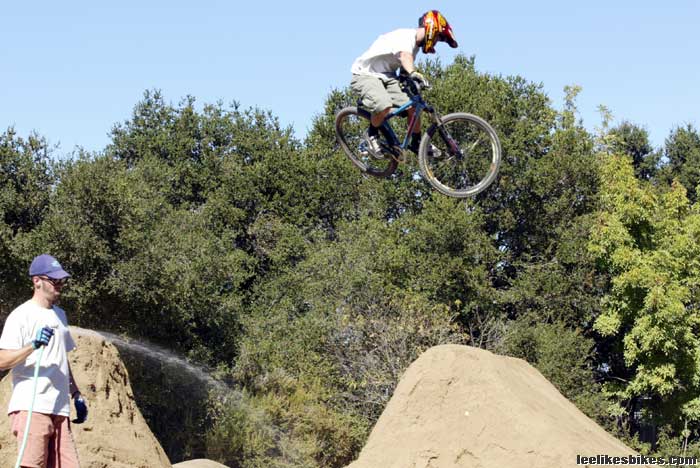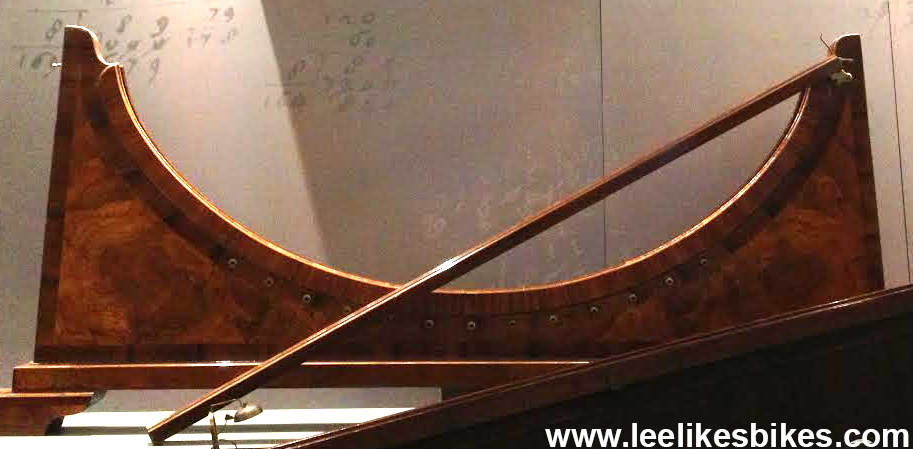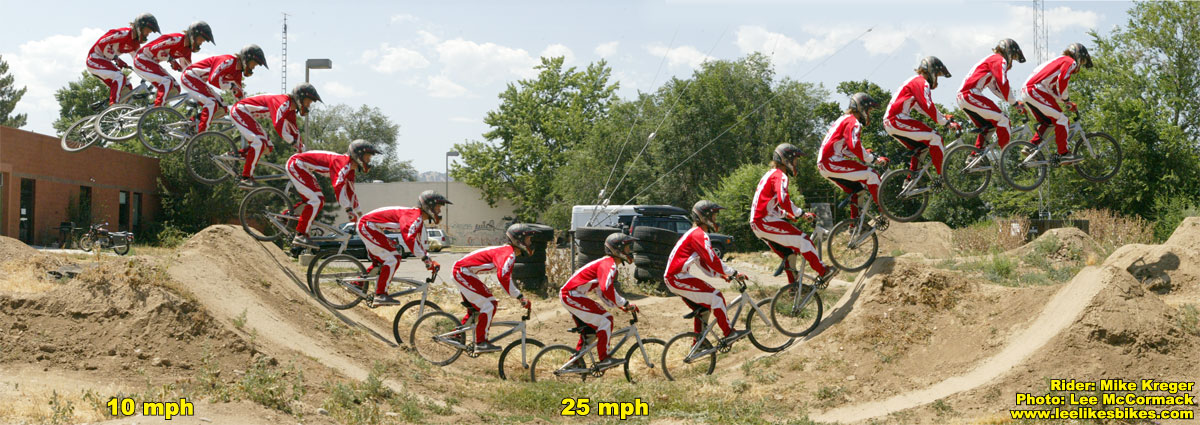Galileo would have built sick rhythm sections

Check out this experimental device from Istituto e Museo di Storia della Scienza, in Florence, Italy.
Those of you who have built pump tracks and dirt jumps (and paid attention while doing so) might have noticed that curved backsides deliver a lot more speed than inclined ones.
Back in the day, Galileo demonstrated that a body takes less time to fall along an arc than to fall along an inclined line. This is because the body accelerates more aggressively in the beginning, then it holds its speed (Kind of like Brian Lopes dispatching you in the dual slalom round of 32.)
Here’s a photo of a brachistochrone dating to the late 18th century. When I saw this in Florence, I was stoked!

Here’s a more contemporary video showing the same concept.
The optimal curve is called a cycloid. Learn about cycloids:

From: http://en.wikipedia.org/wiki/Cycloid
What does this mean to us?
1. Science is rad.
Go as far as you can in math. I gave up too early.
2. When you build pump tracks,
especially for expert riders, consider round “pockets” in the backsides. The more scooped you make the backs (and fronts, because we go both ways) of your rollers, the more speed you can get, but the more skill and power the riders must have.
3. When you build dirt jumps,
realize an inclined plane provides a bigger landing target and, thus, is easier to ride. But: If you’re building for experts and need as much speed as possible — for a big booter! — a curved tranny will give you more love.
You don’t have to get all fancy and create a perfect cycloid curve. As you can see on this model, all types of curves kick ass over the line.
From: http://hom.wikidot.com/galileo
Here we are back on the bike. This section at the old The Fix dirt jumps had very nice flow, especially with Mike Kreger at the helm. Click image for big.
And check out this madness from Calabasas Park in San Jose, CA. This was before they got all official and safe out there. Chris Monestier flies to a very small target. Click image for big.

From: Are your dirt jumps safety certified?
Bikes are rad. Science is rad. Bike science is rad!
Lee
Know more. Have more fun!
Join the leelikesbikes mailing list:


Leave a Reply
Want to join the discussion?Feel free to contribute!